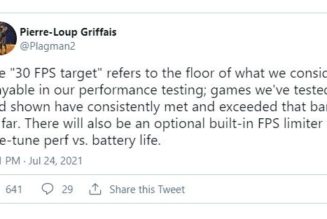
TSMC’s new Arizona chip-making plant has run into construction delays, according to a new report from Nikkei Asia, which notes work has fallen three to six months behind schedule due to a mixture of labor shortages, COVID-19 surges, and complexities in obtaining construction licenses.
According to Nikkei Asia’s report, TSMC originally hoped that the construction of facilities would have reached the point that it’d be able to start moving in chip-making equipment by September. It’s now expecting to have to push that to early 2023 instead.
It’s important to note that the delays here aren’t actually directly related to chip-making — it’s not that TSMC can’t get a hold of enough semiconductor production equipment. Rather, it seems the delay is more mundane, centered on the difficulties of building a gigantic industrial facility. The fact that TSMC is on slightly unfamiliar ground (the Arizona factory is set to be its first advanced site in the US) is likely a contributing factor here, too.
That timeline is key: as Nikkei Asia explains, once chip-making equipment is installed, it can still take up to a year to get everything certified and production started. For comparison, it typically takes TSMC two years to go from breaking ground to production for its fabs in Asia; the Arizona plant, which started construction in June 2021, may not start producing chips until sometime in early 2024, though.
That said, the report notes that TSMC still hopes to make up lost time and adhere to its schedule, with the company telling Nikkei Asia that its production schedule was unchanged from its original plan.
Still, the TSMC delay is a reminder — especially as other companies like Intel look to ramp up their own US-based production — of the difficulties in starting up a fab, even for the most experienced of companies. And it’s a stark example of how solving the ongoing semiconductor shortage by expanding chip-making capacity is easier said than done.








